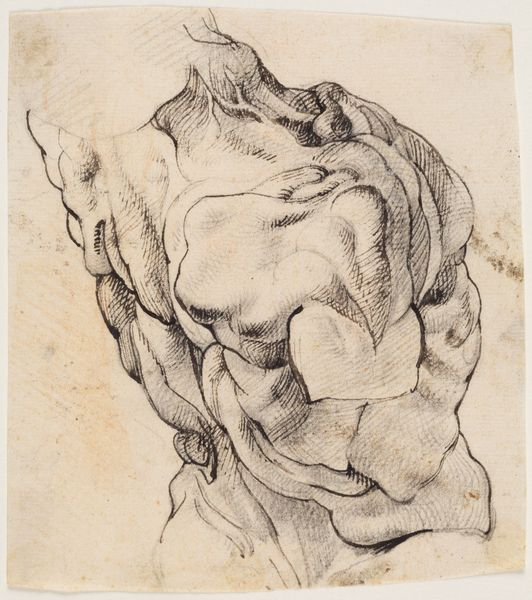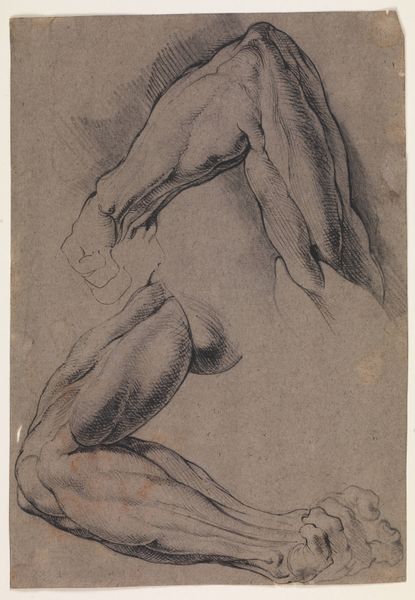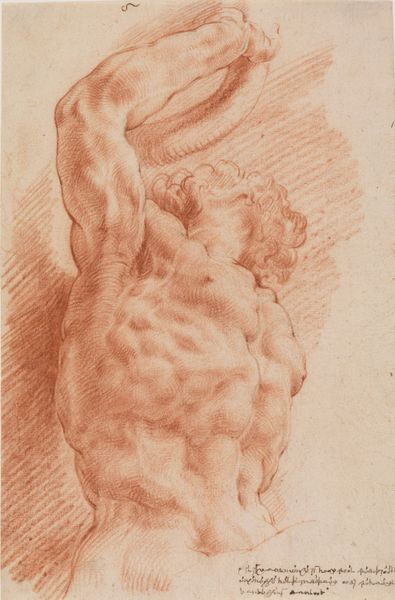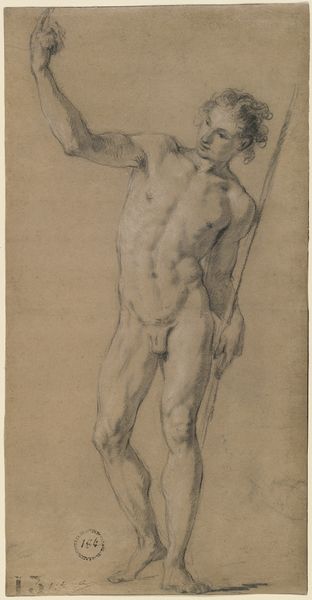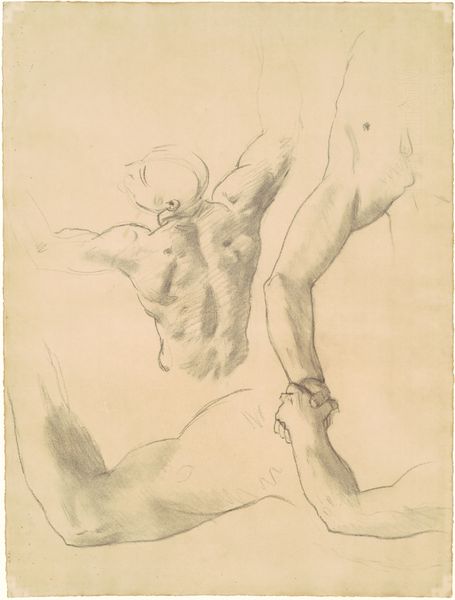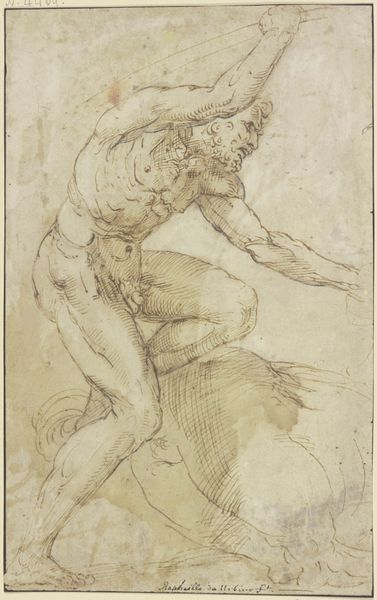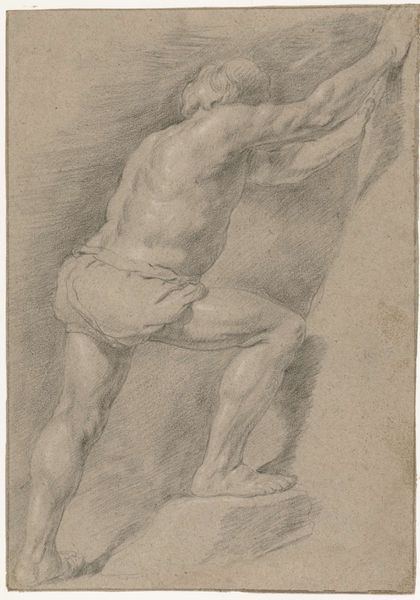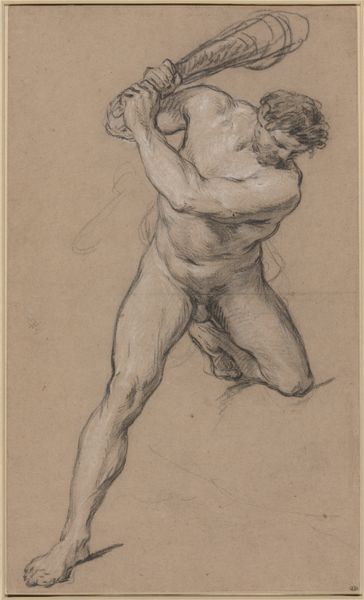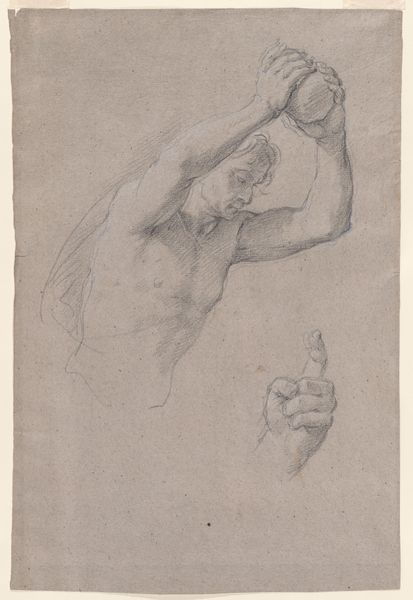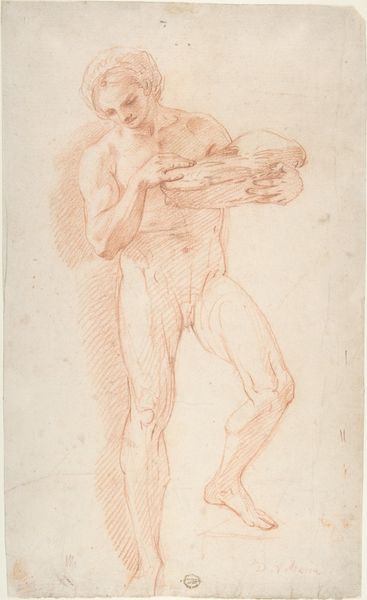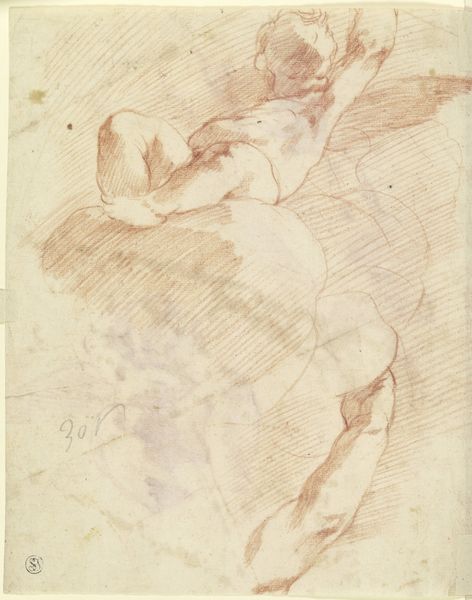
Anatomical Study (écorché). Standing flayed man seen from the back half turned to the left, hos left arm raised. 1628 - 1630
0:00
0:00
drawing, pencil, charcoal
#
portrait
#
pencil drawn
#
drawing
#
pencil sketch
#
charcoal drawing
#
mannerism
#
figuration
#
form
#
pencil drawing
#
pencil
#
pencil work
#
charcoal
#
history-painting
#
academic-art
#
nude
Dimensions: 285 mm (height) x 145 mm (width) (bladmaal)
Curator: This drawing, currently residing in the SMK - Statens Museum for Kunst, is titled "Anatomical Study (écorché). Standing flayed man seen from the back half turned to the left, his left arm raised." It’s attributed to Willem Panneels and dates back to between 1628 and 1630. Editor: My immediate reaction? Stripped bare. It’s confronting to see the human form rendered in such a raw, exposed way. You can almost feel the tension in the raised arm. Curator: Indeed. The écorché – the flayed figure – has long been a tool in artistic training, a symbol not just of mortality but also of hidden knowledge. It exposes the "machine" beneath, aligning with a growing fascination with science and the physical body. Think of it as the artistic quest to understand the spiritual, by understanding how it manifests in matter. Editor: That quest relied heavily on available materials and modes of production. Consider the physical act: Panneels uses pencil and charcoal, humble materials, to render something so complex. There's an almost clinical process at play, an unemotional survey. It points to an increased focus on scientific knowledge accessible to the artistic workshop. Curator: Precisely. This piece isn't merely an anatomical illustration; it taps into deep-seated anxieties about human existence, while also showcasing the mastery of academic artistic traditions and the pursuit of ideal forms through detailed observation. It’s part history painting in potential, part formal exercise, exploring form and its impact. Editor: Absolutely. The historical context would definitely have affected how it was consumed too. Knowledge about the human body shifted through early dissections performed for medical students, creating space for artwork like Panneels'. It allowed new understandings of physical realities for artists. Curator: We can think of this anatomical drawing not as an image of decay but of potential, reflecting a time when science and art were becoming ever more interwoven. The peeled away layers signify the revelations beneath. Editor: A fascinating look into art as labor, as research, not merely creation. The intense physicality within the subdued lines provides insight into shifting practices of art making itself.
Comments
No comments
Be the first to comment and join the conversation on the ultimate creative platform.

